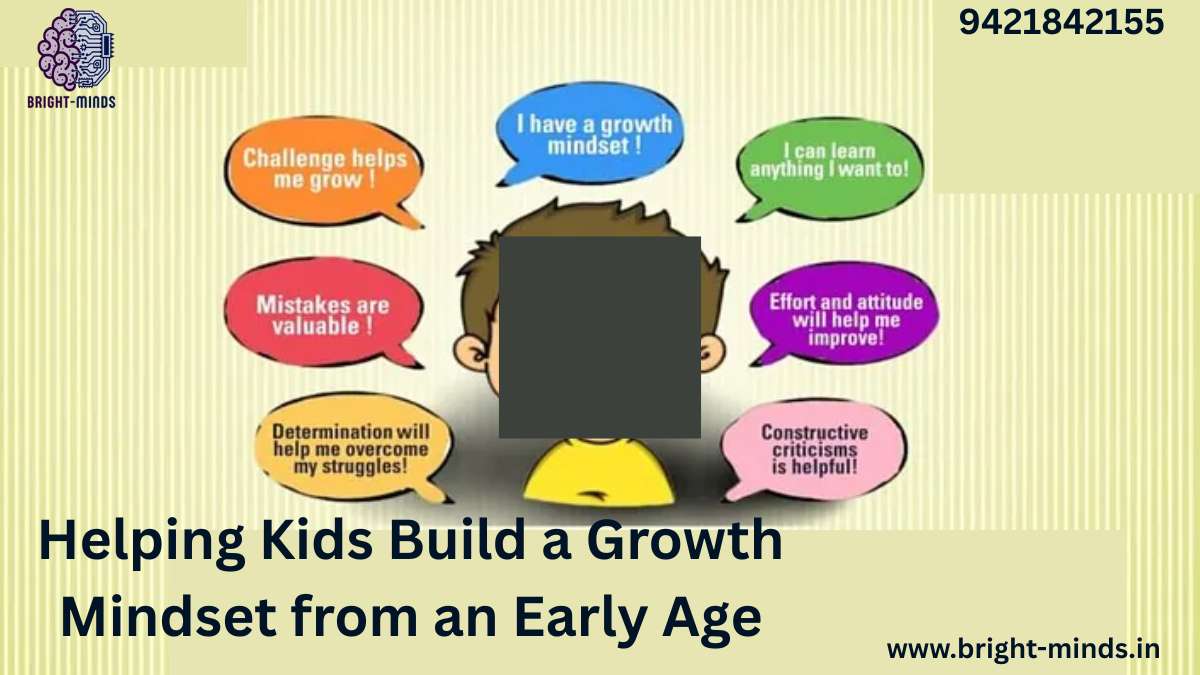In today’s fast-paced world, it’s easy to believe that talent alone leads to success. But research—and real-world experience—says otherwise. What truly sets people apart is mindset.
And here’s the good news: you don’t have to wait until adulthood to develop it. In fact, the earlier children adopt a growth mindset, the better equipped they are for life’s challenges.
So, what is a growth mindset? Why does it matter? And how can parents, educators, and even employers help children (and future employees) start building it now?
Let’s explore.
💡 What is a Growth Mindset?
A growth mindset, a term coined by psychologist Dr. Carol Dweck, is the belief that abilities and intelligence can be developed through dedication, effort, and learning from mistakes.
This is in contrast to a fixed mindset, where people believe that their talents and intelligence are set in stone.
🔁 Growth mindset says: “I can’t do it yet—but I can learn.”
❌ Fixed mindset says: “I’m just not good at this.”
📈 Why It Matters: Real-World Impact
In school, children with a growth mindset are:
- More motivated to learn
- Better at handling failure
- More resilient under pressure
- Willing to take on challenges
But the impact doesn’t stop there.
In the workplace, employees with a growth mindset:
- Adapt quickly to change
- Learn new skills faster
- Embrace feedback instead of avoiding it
- Lead with innovation, not fear
🚀 Bottom line: Instilling a growth mindset early helps raise confident, curious, and capable future leaders.
📊 Market Trends: The Rise of Mindset Education
Education systems and companies around the world are beginning to recognize the power of mindset development:
- Schools are integrating Social Emotional Learning (SEL) and mindset coaching into their curriculum.
- EdTech platforms offer gamified lessons on perseverance, effort, and positive thinking.
- Workplace training programs now include mindset-building modules for employees and managers alike.
🧠 In fact, a 2023 McKinsey report found that 94% of hiring managers prioritize soft skills like adaptability and resilience—qualities strongly linked to a growth mindset.
👪 Practical Ways to Build a Growth Mindset at Home
You don’t need fancy programs or expensive tutors to get started. Here are simple, effective ways to help kids develop a growth mindset from the comfort of home:
1. Praise Effort, Not Talent
Instead of saying, “You’re so smart,” try:
👉 “I’m proud of how hard you worked on that.”
This teaches kids that success comes from effort—not just ability.
2. Normalize Mistakes
Turn mistakes into teachable moments.
👉 “What did you learn from that?”
👉 “Mistakes help your brain grow.”
This builds emotional resilience and encourages learning over perfection.
3. Use the Power of “Yet”
When your child says, “I can’t do this,” respond with:
👉 “You can’t do it yet, but you will with practice.”
That one little word shifts their perspective from limitation to possibility.
4. Model a Growth Mindset Yourself
Let kids see you trying, failing, and learning.
👉 “This is tricky, but I’m figuring it out.”
👉 “I made a mistake—but I’ll learn from it.”
Children mirror adult behavior more than we realize.
5. Set Challenges Together
Create small, achievable challenges where kids can practice persistence—like puzzles, sports, or learning a new hobby.
📚 Growth Mindset in Education and the Workplace
Teachers and schools can play a big role in shaping mindset culture:
- Offer constructive feedback instead of simply marking right or wrong answers.
- Encourage collaboration over competition.
- Share stories of famous figures (like Einstein or Oprah) who succeeded through persistence.
And for companies investing in employee family programs or CSR:
- Offer parent-child workshops focused on mindset and learning.
- Partner with EdTech providers that deliver mindset-based learning content.
- Sponsor access to emotional intelligence or growth-oriented courses for employees and their families.
🎯 Educating kids today means preparing tomorrow’s workforce.
🧠 Real-World Example: Ria’s Story
Meet Ria, a 9-year-old who used to give up easily on math homework. Every mistake felt like failure—until her teacher introduced the concept of a growth mindset.
Her class started using phrases like:
- “This is hard, but I can learn it.”
- “Mistakes help me grow.”
Fast forward a few months: Ria proudly tackles tough math problems, even when she doesn’t get them right the first time. Her confidence has spilled over into other areas—like reading, writing, and even soccer practice.
💡 One mindset shift. A lifetime of change.
✨ Tips for Parents & Educators
✅ Use books that teach resilience and effort (e.g., “The Most Magnificent Thing” or “The Girl Who Never Made Mistakes”)
✅ Display motivational quotes around your home or classroom
✅ Encourage reflection with prompts like:
- “What was something hard you tried today?”
- “How did you feel after sticking with it?”
🚀 Final Thoughts: Start Small, Grow Big
Building a growth mindset isn’t about perfection—it’s about progress.
It’s teaching kids to love learning, embrace challenges, and understand that success is built, not born.
And the best time to start? Right now.
Best Home Tuition Posters for Tuition Classes in Kharadi
home tuition in punehome tuition posters for tuition classesonline tuition classespamphlet for tuition classesteachmint tuition apptuition classestuition classes near metuition classes postertuition classes poster ideas

